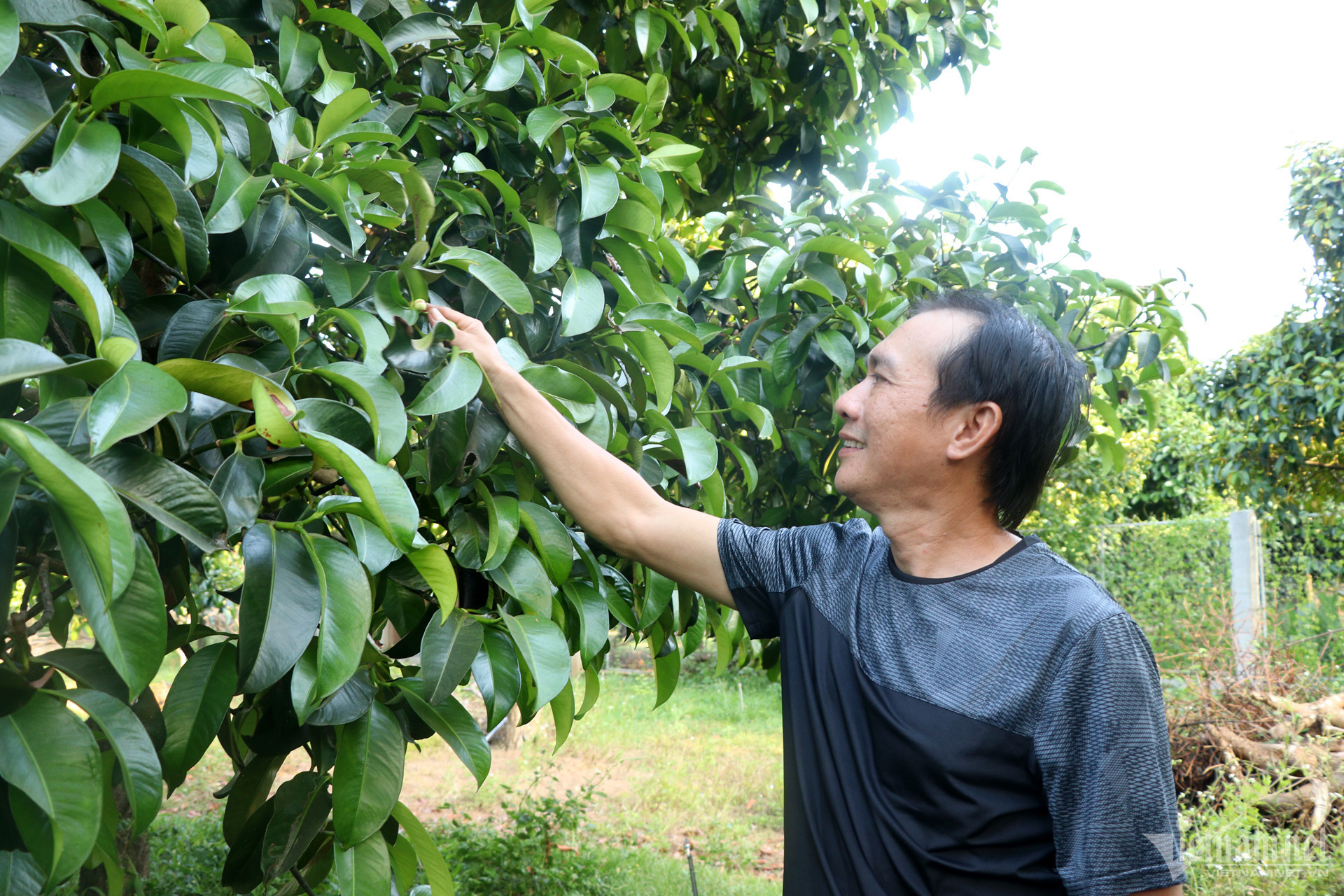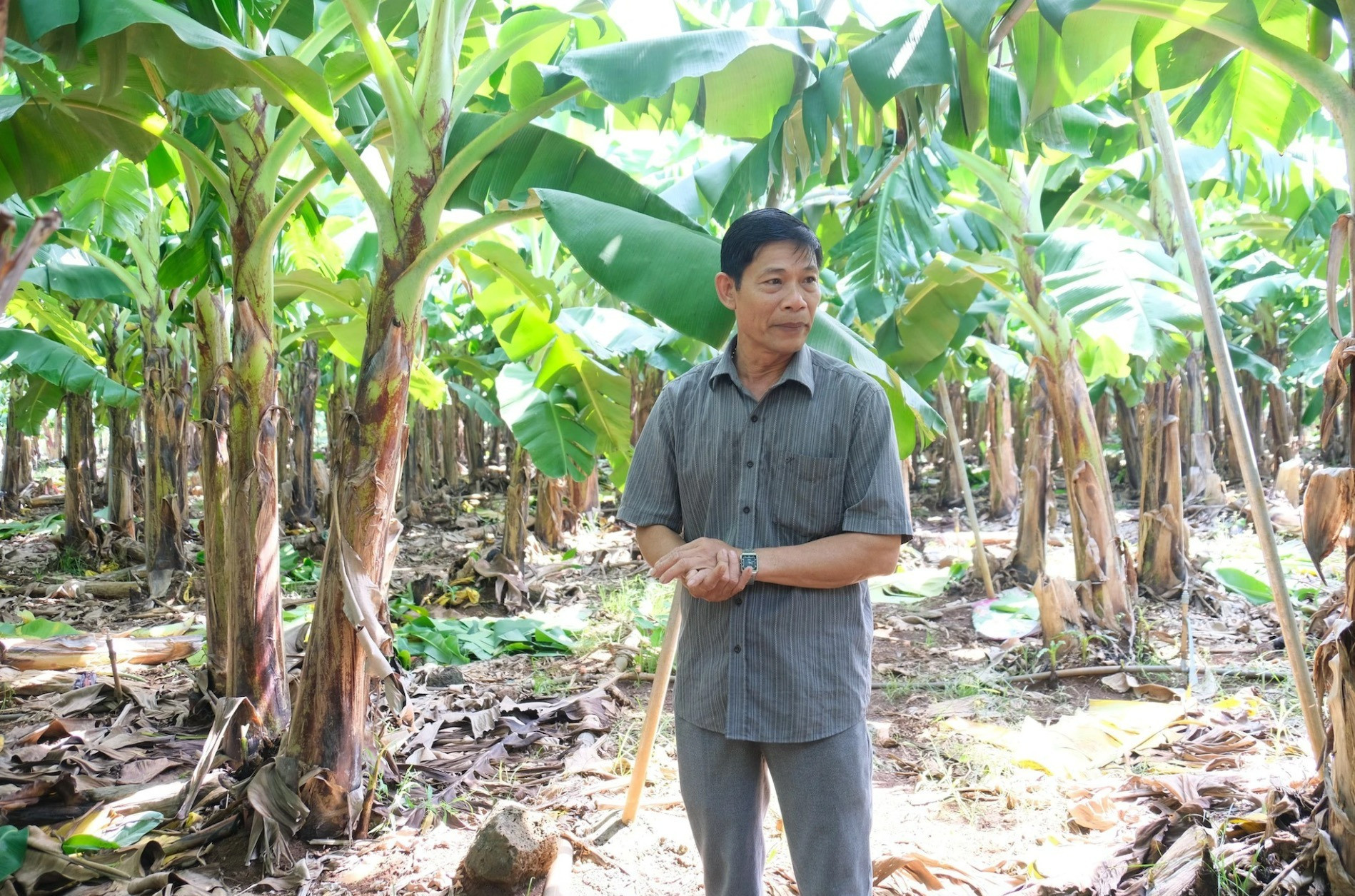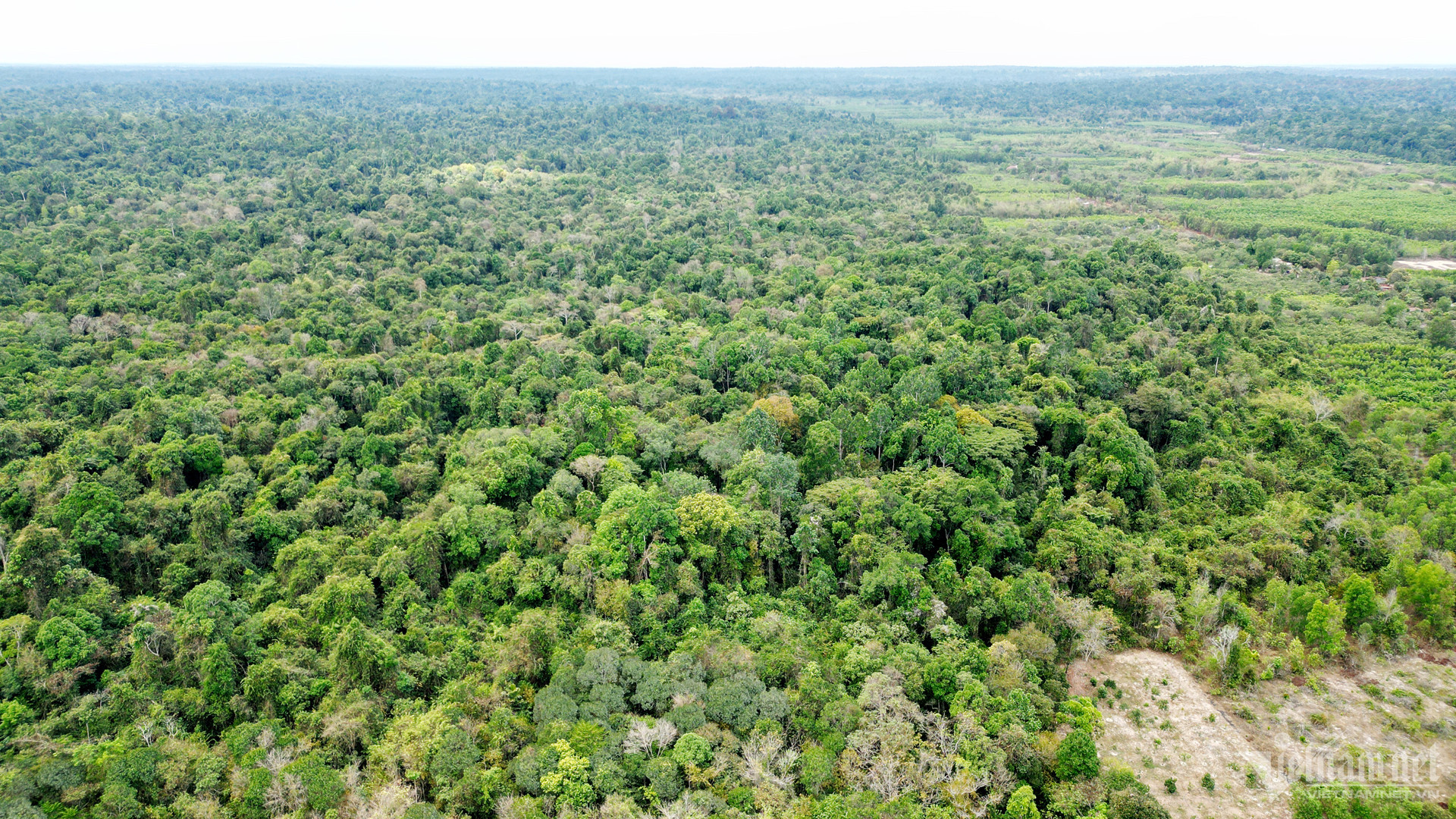
Ly Minh Hung, a farmer in Dong Nai, once grew bananas. He used plant protection chemicals and fertilizers. After many years, the soil became infertile, and he needed to use more fertilizer, which led to higher fertilizer residue in the soil.
For Hung, this was a headache, and pondered the problem daily. Finally, he decided to ‘play big’. Hung called on local households to contribute capital to establish Thanh Binh, a cooperative specializing in distributing safe farm produce in Trang Bom, Dong Nai.
The cooperative produces organic bananas and follows the circular agriculture model.
Thanh Binh now has 320 hectares of banana growing area. All the parts of banana trees, including leaves, fruits, tree trunks, peels and areca, can be used to make products for different purposes. Nothing is thrown away.
Banana peels are composted, while banana leaves create a layer of humus for soil. Banana pulp is used to make cups and bowls, while banana areca is used to make fibers, or is sold for VND8,000 per kilogram.
Hung told VietNamNet that bananas meeting standards will be packed for export to the Middle East, Europe and Asia. The cooperative exports nearly 200 container of bananas each month. The remaining bananas are used to create starch and dried products.
“The yield of organic bananas is just equal to the products made with old cultivation method,” Hung said. “But the production cost is much lower, while sales are stable.”
“During Covid-19, our cooperative could export bananas to markets. Oversupply, which occurred in many localities, did not happen in our cooperative. At present, we don’t have enough bananas to sell,” he added.
In general, one hectare of banana growing area can bring revenue of VND600-700 million. Farmers can make a profit of VND250-270 million from every hectare from fresh banana and added-value product sales. Some cooperative members can pocket billions of dong each year.
More importantly, developing organic agriculture and a circular economy is good for the ecosystem, soil and water, and necessary for sustainable development.
Mangosteen orchard

In Long Khanh, Dong Nai, Vuong Thanh Lam, an organic mangosteen grower, showed off his 1-hectare orchard. The orchard was first developed by his father in 1998. Five years ago, instead of the traditional cultivation method under which a lot of fertilizer and plant protection chemicals were used, Lam decided to shift to organic farming.
The green grass in the orchard is not simply weeds. "In hot weather like today, the grass helps keep the soil moist, and helps cut the volume of water needed,” he explained.
Nam installed an automatic irrigation system, which avoids water waste.
In the dry season, grass is kept in the orchard, covering the earth. Before and after the rainy season, grass is cleared to make the soil surface clear and well drained.
Meanwhile, decomposed grass will create a layer of humus, making the soil fertile for plants.
This is a natural, mutually supportive relationship that Vietnamese have been using for many generations. Nam, who uses the method, said he had not heard about ‘greenhouse gas emissions’ and ‘net zero’.
Following organic agriculture production, Nam simply wants to create a high-quality mangosteen species, safe for consumers and good for the environment.
“Organic agriculture maintains stable mangosteen output. Failure no longer occurs,” he said, adding that his products can sell at VND100,000 per kilogram because they are organic, while normal mangosteens can go for only VND80,000 per kilogram.
He provides fruits to domestic shops, and also exports products to the UK, Australia and New Zealand.
Going green

Tran Lam Sinh, deputy director of the Dong Nai Department of Agriculture and Rural Development, the province is running the ‘net zero’ race. “The goal is to balance the absorbed and emitted carbon volume,” he said.
The intensive use of chemicals has decreased, while the use of natural resources in agricultural production has increased.
A report found that organic fertilizer accounts for 45.5 percent of total fertilizer produced and consumed. The economical watering system is being used on an area of 59,754 hectares, accounting for 31.27 percent of the province’s major crops.
Tam An